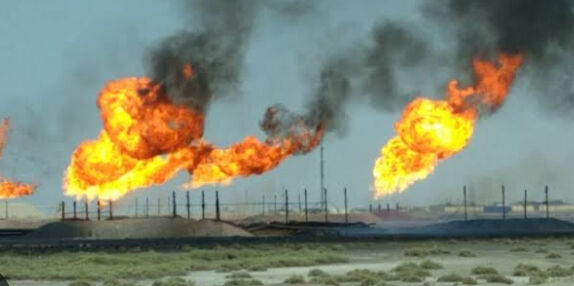Nigeria Flared $1.1bn Worth of Gas in Four Years
Data sourced from the National Oil Spill Detection and Response Agency (NOSDRA), according to Business Day findings, show the country flared 300.5 million standard cubic feet (mscf) of gas in 2024, crossing the threshold for levels not seen since 2020, of 353.5 million square cubic feet of gas.
The flared gas could have powered millions of Nigerian homes, reducing the reliance on diesel generators and easing the financial burden on households that spend a chunk of their income on energy.
Data from NOSDRA also show that about 16 million tonnes of carbon emissions were released into the atmosphere, a development that could translate into a health hazard for residents near the flaring sites.
Natural gas flaring occurs when excess gas, often a byproduct of oil production, is burned off rather than being captured for use.
This practice, common in oil-rich regions like Nigeria’s Niger Delta, releases large quantities of harmful greenhouse gases into the atmosphere, contributing to global warming and the country’s pollution problems.
“The flares are still going on because for some it’s cheaper to flare than to capture gas for power or other needs,” Jide Pratt, country manager of TradeGrid, said. “So, you find there is not adequate pricing for gas to make it commercially viable.”
Pratt, also the country manager of TradeGrid, stated that the nation must raise the penalty of $2 per $1000 scf to serve as a deterrent to flaring, noting that this must be enforced by the Nigerian Upstream Petroleum Regulatory Commission (NUPRC).
Analysis of the data from NOSDRA shows that the gas flared is valued at $1.1 billion while the penalties payable stood at $601.1 million, indicating 54 percent of what could have been revenue for the country.
Section 104 of the Petroleum Industry Act criminalises gas flaring, except in instances of emergency, exemption from the Nigerian Upstream Petroleum Regulatory Commission (NUPRC), and when it is considered acceptable as a safety practice under established regulation.
Section 107 of the PIA also provides that the NUPRC or the Nigerian Midstream and Downstream Petroleum Regulatory Authority (NMDPRA) may grant a permit to a licensee or lessee to allow the flaring or venting of natural gas for a specific period — (a) where it is required for facility start-up; or (b) for strategic operational reasons, including testing.
Also, the Gas Flaring, Venting, and Methane Emissions (Prevention of Waste and Pollution) Regulations 2023 prescribes applicable penalties, while regulation 12(2e) therein states that flaring may occur as long as it is within the threshold approved by the NUPRC.

